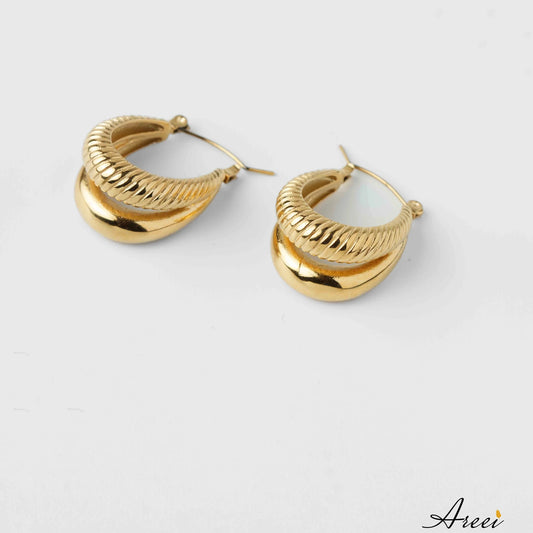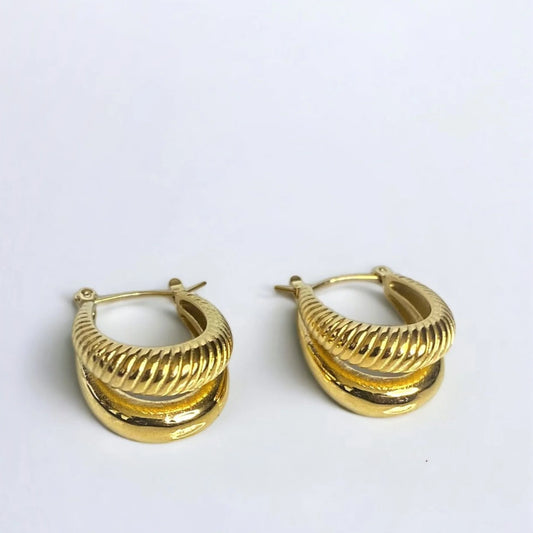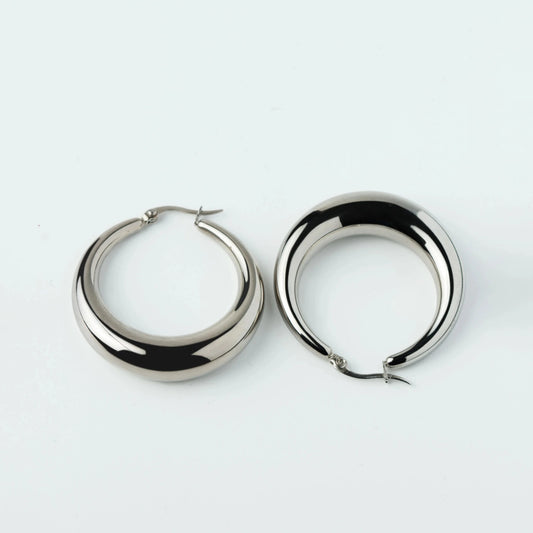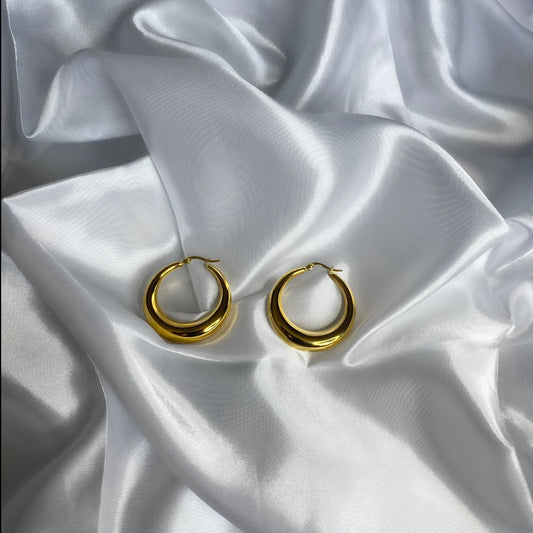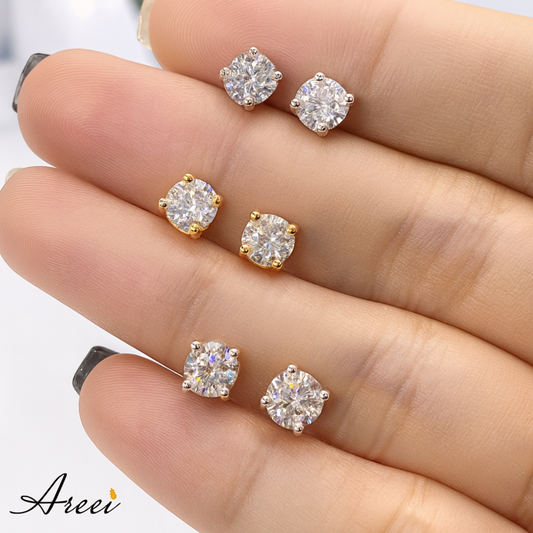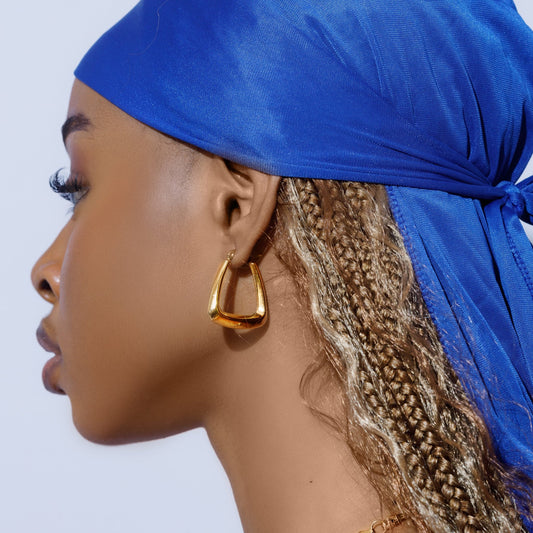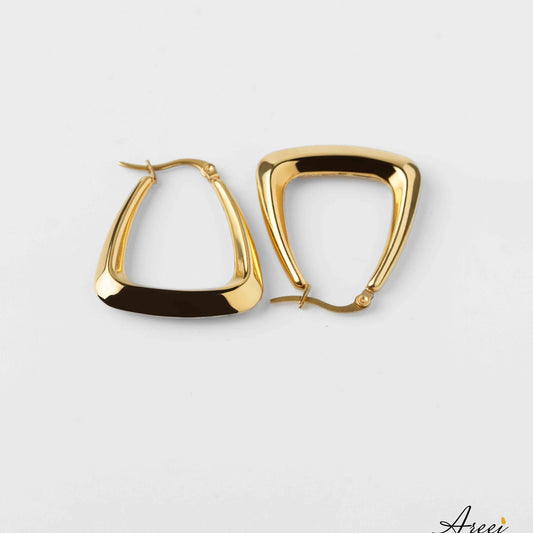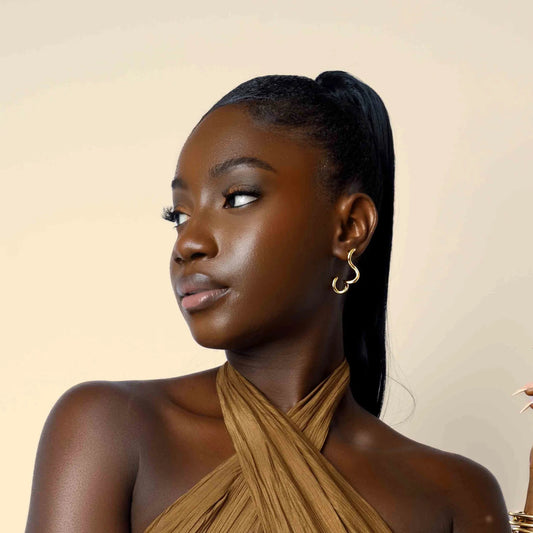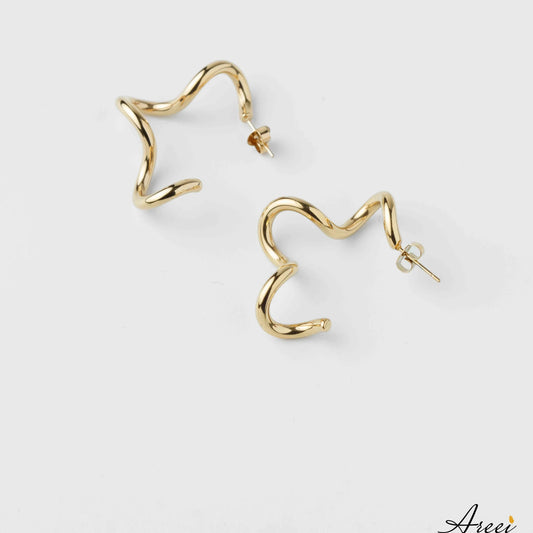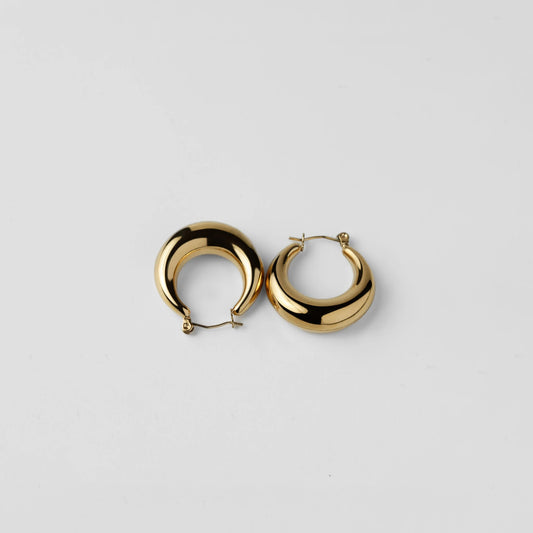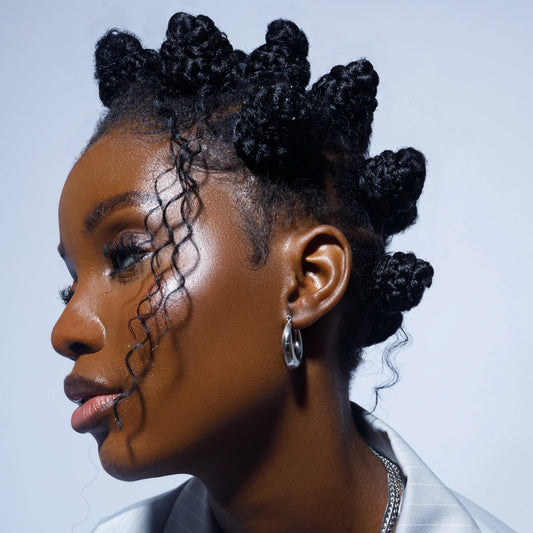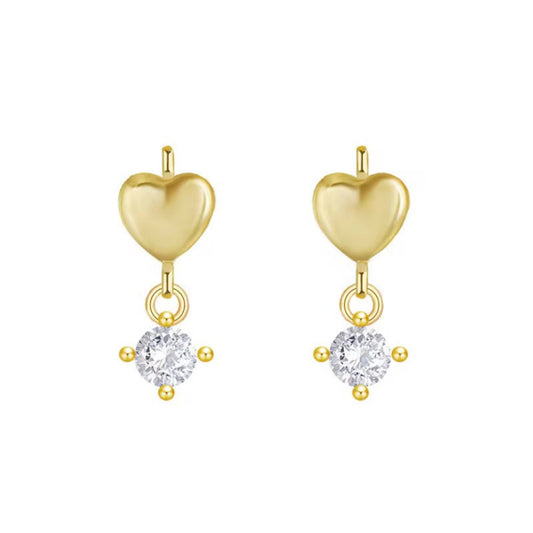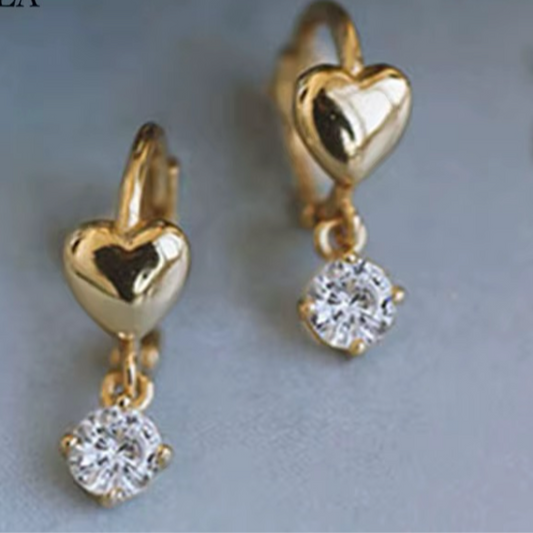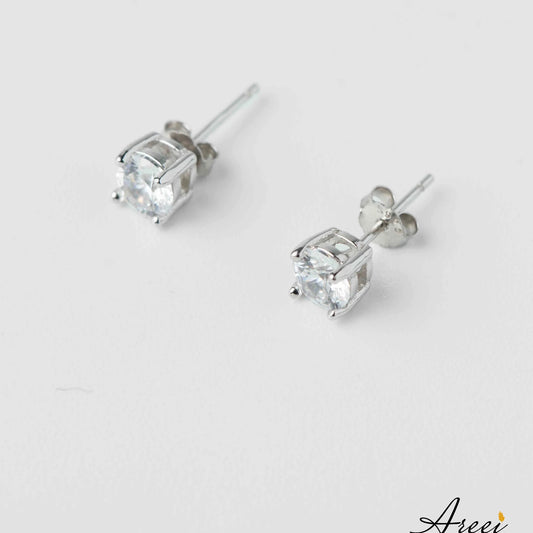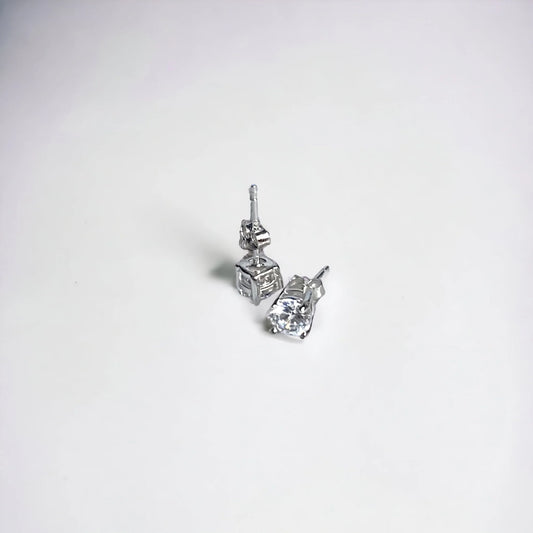Val Rose Gold Stud Earrings from Areei
Selecting the best stud earrings for ear piercings can make the difference between a comfortable, healing experience and potential complications and extreme pain. Whether you're getting your first piercing or adding to your collection, the type of stud you choose matters. Stick with us all through this blog post as we cover all you need to understand: the best options for different ear piercings, materials, styles, and specific piercing needs.
Best Materials for Ear Piercing Studs
The material is perhaps the most crucial factor when choosing studs for new or healing piercings:
Titanium:
Why it's best:
- Even for sensitive skin it is very, very unlikely to have an allergic reaction
- It’s lightweight and comfortable for long-term wear
- Highly resistant to corrosion
- It’s not harmful to living tissues and safe for healing piercings
If you're piercing for the first time, have sensitive ears, undergoing cartilage piercings, or have any metal allergies, then this should be your pick.
14K or 18K Gold:
Why it's excellent:
- Unlikely to cause an allergic reaction. when nickel-free
- Traditional and aesthetically pleasing
- Available in yellow, white, and rose gold
- Suitable for long-term wear
Best for: If your piercings are healed or somewhat healed, undergoing earlobes piercing, or you’re willing to invest in quality jewellery, this is for you.
Note: Ensure it's solid gold, not gold-plated, and nickel-free for initial piercings.
Stainless Steel:
Why it works:
- Less expensive than titanium or gold
- Durable and corrosion-resistant
- Works well for most people (though not 100% allergy free)
Best for: Most earlobe piercings and those without known metal sensitivities.
Materials to Avoid for New Piercings
For fresh piercings, avoid these materials despite their popularity:
- Sterling silver (tarnishes and can cause irritation)
- Gold-plated jewellery (coating wears off)
- Costume metals (often contain nickel)
- Plastic or acrylic (can harbor bacteria)
Best Stud Styles for Different Ear Piercings
Beyond material the style and design of your stud also plays an important both healing and comfort:
Flatback Labret Studs:
Why they're ideal:
- Flat backing doesn't stick out or catch on hair/clothing
- Secure fit with threaded or threadless options
- Available in various decorative tops
- Comfortable for sleeping
Best for: Most ear piercings, especially helix, forward helix, tragus, and conch.
Traditional Butterfly Back Studs:
Why they work:
- Familiar and easy to use
- Secure closure for everyday wear
- Widely available in many designs
Best for: Fully healed earlobe piercings only (not recommended for new piercings or cartilage).
Straight Barbells:
Why they're effective:
- Allow for swelling with straight design
- Good for certain anatomical needs
- Secure ball closures
Best for: Industrial piercings, some cartilage piercings.
Push-Pin Flat Back Studs:
Why they're great:
- Easy to insert and remove
- Comfortable flat backing
- Secure without being too tight
Best for: Healed lobe and cartilage piercings.
Best Studs for Specific Ear Piercings
Different parts of the ear have different needs when it comes to initial jewellery:
Earlobe Piercings
Best option: Titanium or 14K gold labret studs
- 16g or 18g thickness
- 6-8mm length to accommodate swelling
- Flat back for comfort
Helix/Cartilage Piercings
Best option: Titanium flatback labret studs
- 16g thickness for strength
- 6-8mm length initially (can downsize later)
- Minimal decorative front to prevent snagging
Tragus Piercings
Best option: Short titanium flatback labret stud
- 16g thickness
- 5-6mm length (shorter due to anatomy)
- Small decorative end
Conch Piercings
Best option: Titanium flatback labret stud
- 16g or 14g thickness
- 6-8mm length for inner conch
- Flat design that doesn't protrude too much
Choosing the Right Size for Your Piercing Studs
Proper sizing is essential for comfort and healing:
Gauge Size (Thickness)
- Standard earlobe: 18g-20g
- Cartilage piercings: 16g-18g
- Tragus/conch: 16g usually recommended
Length/Depth
- New piercings: Choose longer posts (6-8mm) to accommodate swelling
- Healed piercings: Can downsize to shorter posts (4-6mm typically)
- Consider anatomy: Thicker earlobes or cartilage need longer posts
When to Change Your Initial Piercing Studs
Patience is key for successful piercings:
- Earlobe piercings: Wait 6-8 weeks minimum
- Cartilage piercings: Wait 3-6 months minimum
- Always consult: Check with your piercer before changing initial jewellery
- Downsize appropriately: Have a professional help with your first jewellery change
Professional vs. Self-Piercing: Why It Matters
Your choice of piercing method affects what studs are best:
Professional Piercing Benefits:
- Use of implant-grade materials
- Proper sterilization techniques
- Correct placement and angle
- Appropriate jewellery selection for your anatomy
Piercing Guns (Not Recommended):
- Often use lower-quality butterfly back studs
- Cannot be properly sterilised
- May cause tissue damage
- Limited jewellery options
Caring for Your New Piercing Studs
Proper aftercare ensures your chosen studs work effectively:
- Clean twice daily with sterile saline solution
- Avoid touching with unwashed hands
- Don't rotate or move the studs during healing
- Leave studs in place until fully healed
- Avoid swimming, hot tubs, and makeup around the piercing
The Overall Best Choice for Most Ear Piercings
For most new ear piercings, implant-grade titanium flatback labret studs represent the best overall choice, balancing:
- Excellent biocompatibility
- Minimum risk of allergic reaction
- Appropriate design for healing
- Reasonable price point
-
Versatility across piercing types
When in doubt, consult with a professional piercer who can recommend the best specific stud for your unique anatomy and piercing goals.

